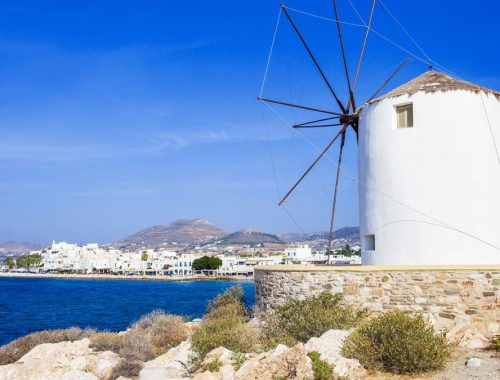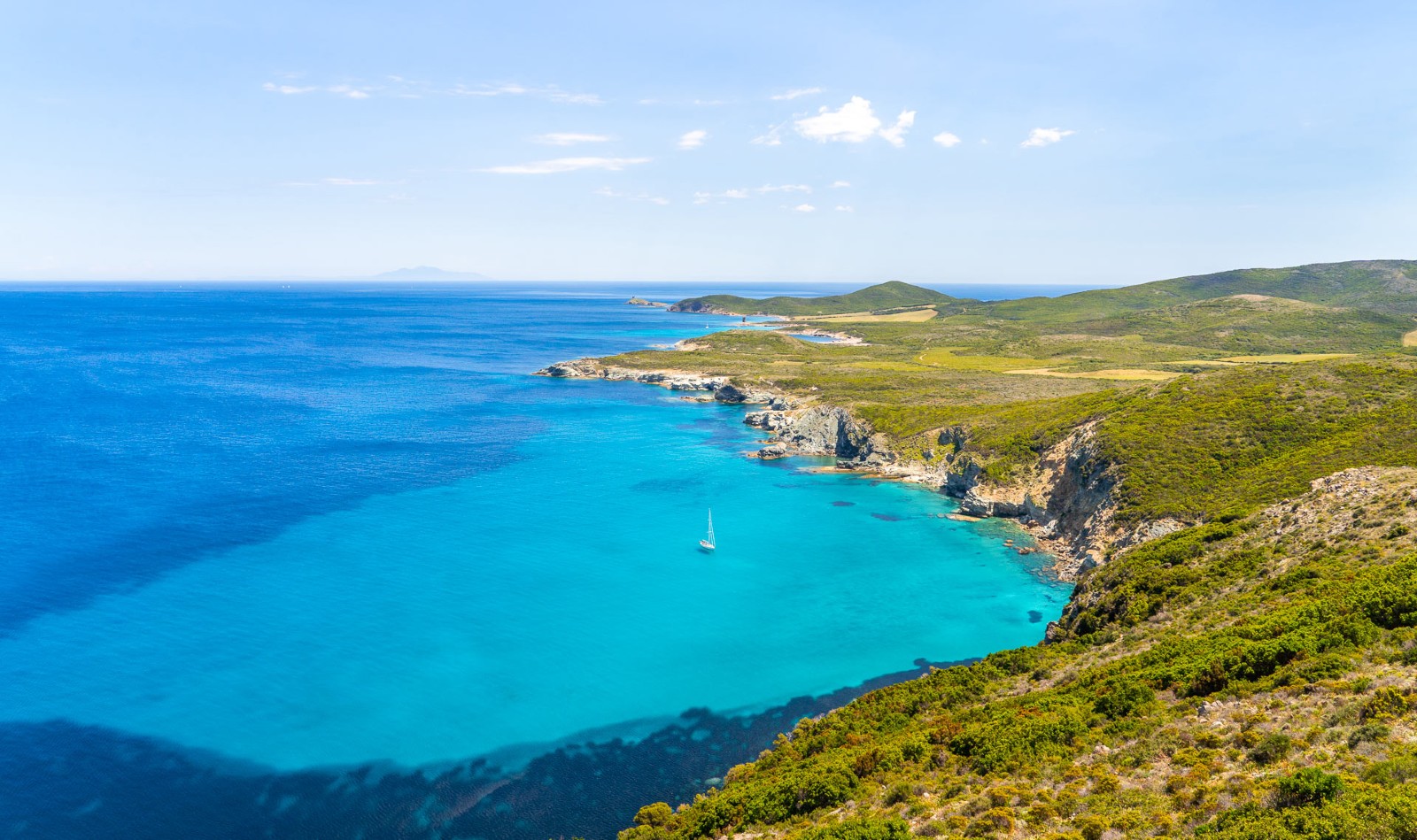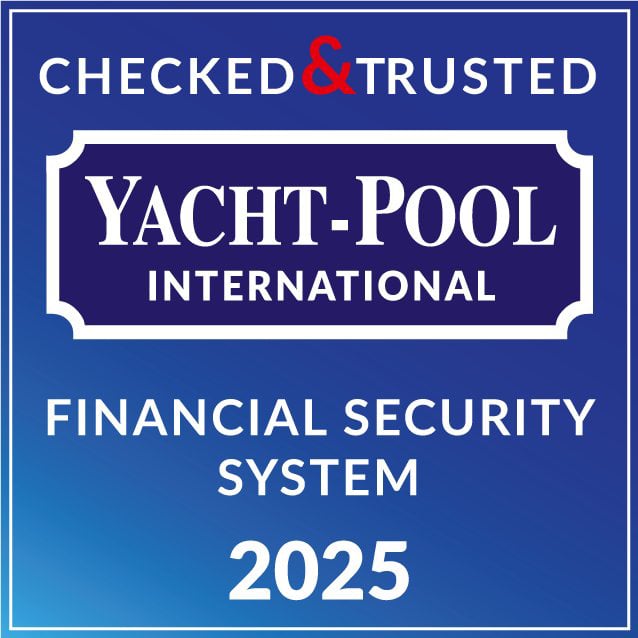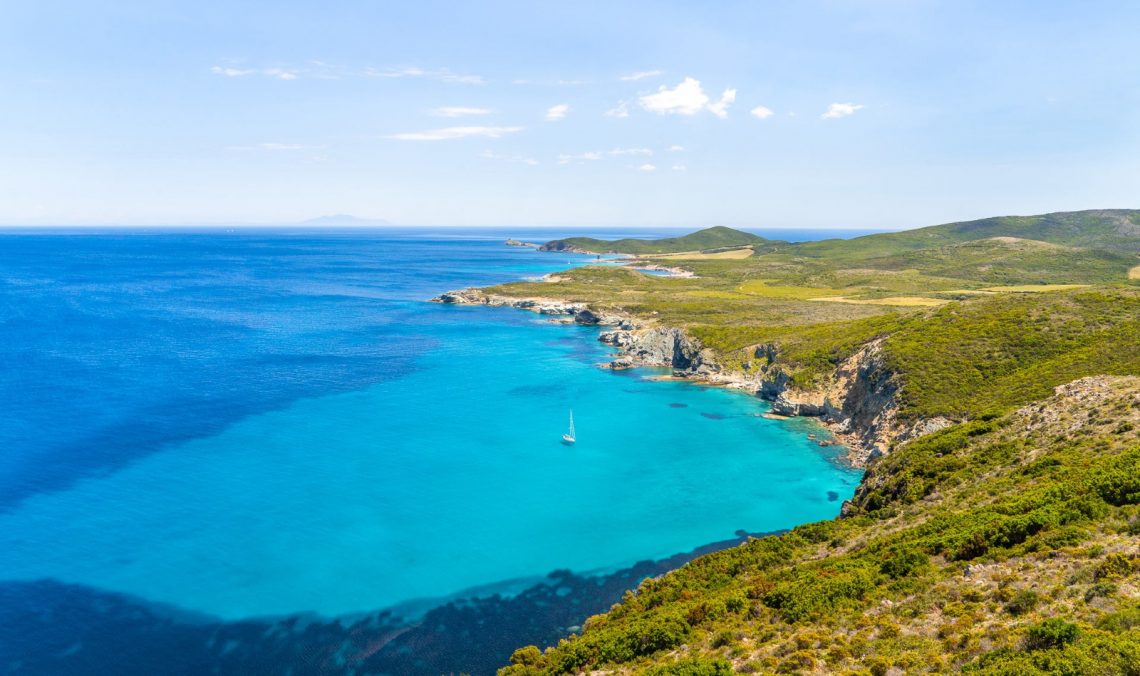
Capraia, Corsica, and Elba: The best of the Mediterranean just miles apart
Capraia, Corsica, and Elba. One of the highlights of the central Tyrrhenian Sea is that, within just a few miles, you can explore by sailing some of the most picturesque spots in the Mediterranean. On this itinerary, departing from Marina di San Vincenzo, we first reach Capraia, a volcanic and rocky island. Once a prison in the 19th century, it has transformed into a tourist destination attentive to the environment and the preservation of its unique natural features.
Next, we head to Capo Corso, where pristine nature, crystal-clear waters, and sandy beaches contrast with picturesque mountains, white cliffs, and red rocks. It’s a place that is at once wild and welcoming, gentle and harsh, fascinating and austere—capable of evoking strong emotions in sailors. Finally, we visit the stunning island of Elba, where former iron mines and cliffs alternate with black, sparkling beaches. It is especially famous for having hosted Napoleon Bonaparte, who, during his exile, left a profound mark on the island.
.
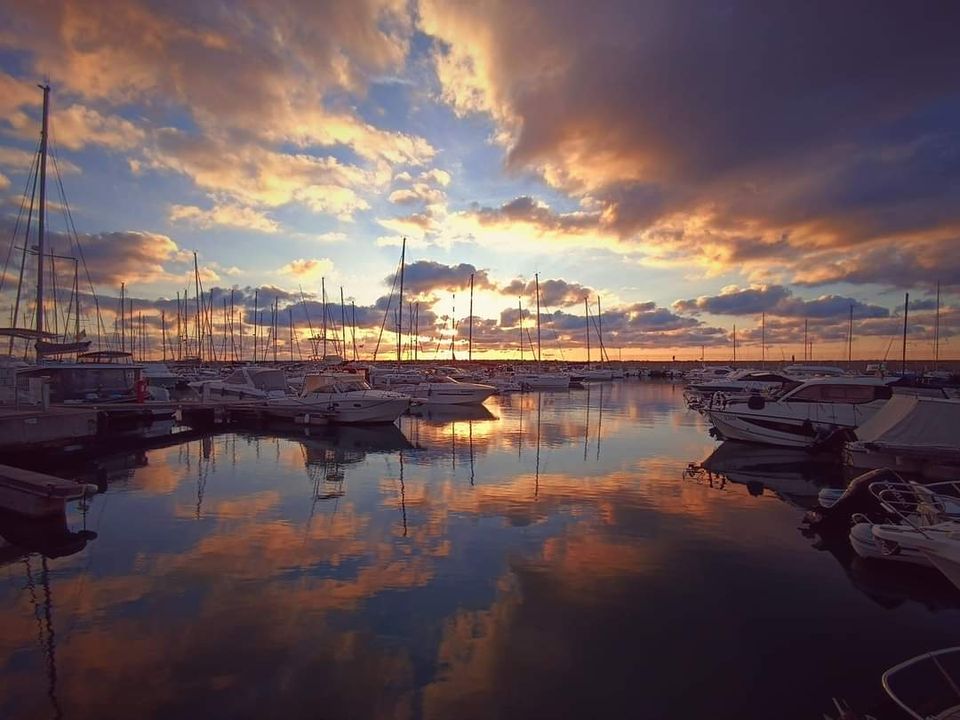
Day 1, Marina di San Vincenzo – Embarkation
Capraia, Corsica, and Elba. The nautical base for our cruise between Tuscany and Corsica is San Vincenzo, a charming seaside town in the heart of the Etruscan Coast. Marina di San Vincenzo is just 120 km from Florence Airport and 50 km from Pisa Airport. The marina, with 280 berths on depths ranging from 3 to 4.5 meters, is located in the town center, with the main street full of shops, bars, and restaurants within walking distance. This allows guests to enjoy all the comforts the town offers, along with its main attractions.
The train station is only about a 2-minute walk from the port, making it easy to explore the inland area and visit the beautiful towns of the Val di Cornia, renowned for elegant landscapes and excellent wine production, such as Bolgheri, Castagneto, Montescudaio, Populonia, and the medieval village of Suvereto. For those seeking some relaxation, there is also the town’s long beach, much of which is public, set in a wild landscape of sand, pine forests, and sea. Among the most popular beaches are La Principessa and Rimigliano, with its scenic coastline.
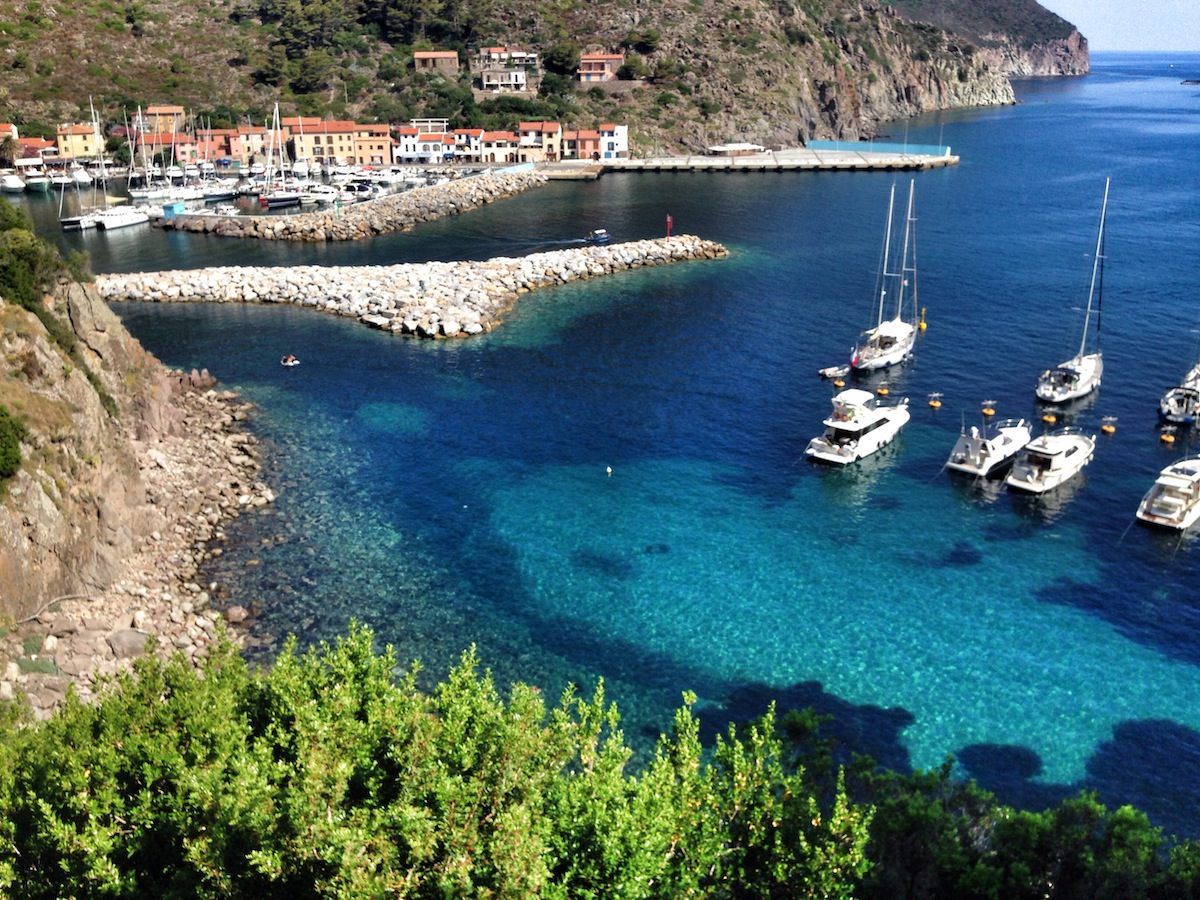
Day 2, Marina di San Vincenzo – Capraia, 31 nautical miles
The island of Capraia is a strategic stop for those sailing to Corsica, as it allows the crossing to be split into two stages, spending the night in the small harbor. It is the third-largest island of the Tuscan Archipelago and is characterized by rugged, dramatic cliffs. Overlooking the main port is a small medieval village at the foot of the fortress, accessible via the old Roman road.
Alternatively, one can spend the night at anchor. The most picturesque coves are on the southern side: Cala del Moreto and especially Cala Rossa, near Punta dello Zenobito. Cala Rossa is all that remains of the mouth of an ancient volcano that sank into the sea. Its striking red color contrasts vividly with the deep blue of the water below. Other small coves are found on the western side: Cala del Reciso, Cala del Fondo, and Cala del Vetriolo. The latter is notable for its “tafoni,” holes in the rock formed by wind erosion. The only sandy beach on the island is Cala della Mortola, near the northern tip.
Capraia is also renowned for its hiking trails, which run along the island’s ridge from the village to Punta dello Zenobito. In the interior, immersed in Mediterranean scrub, you can also find the old penal colony and a small pond fed by rainwater.
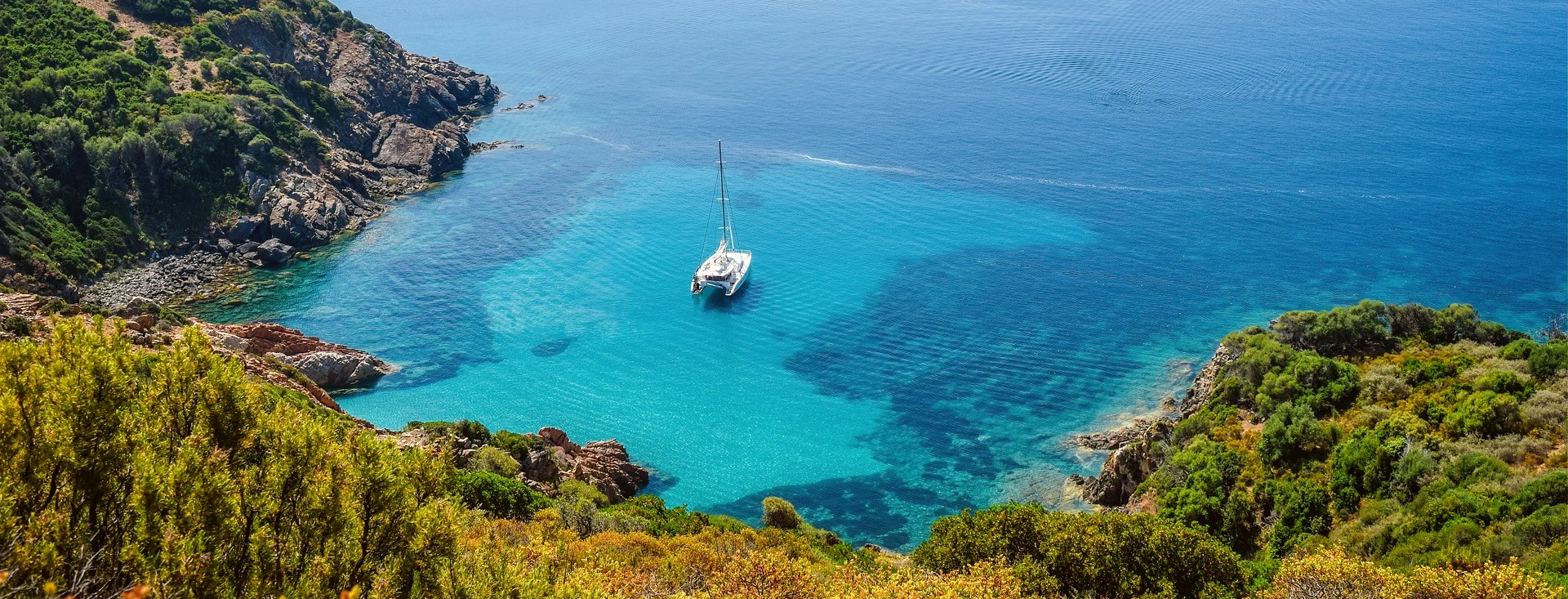
Day 3, Capraia – Capo Corso, 15 nautical miles
On the third day, we finally reach Corsica. Located at the northern tip of the French island, Capo Corso is a wild and bucolic peninsula that enchants with its unspoiled nature, dotted with picturesque fishing villages, ancient Genoese towers along the coast, and windmills. For mooring, you can use Macinaggio, the largest marina in Capo Corso, which offers a charming maritime atmosphere. It is also the starting point of the customs trail leading to Barcaggio Beach, surrounded by dunes and a stunning Mediterranean scrub, with breathtaking views of the Finocchiarola Islands nature reserve. Along the way, you will also pass the beautiful Tamarone Beach.
Among the fishing villages worth visiting, there’s plenty to choose from: Erbalunga, a hub for many artists; Pietracorbara, with its authentic atmosphere and renowned distillery; Rogliano, with its rich architectural heritage; Centuri, a charming fishing village of Roman origin; and finally Nonza, considered one of the most beautiful spots in Capo Corso for its cliffside location and the old Genoese tower overlooking a small black pebble beach from a height of 150 meters. Mulino Mattei also deserves a visit, offering an exceptional panorama along the coast—from the village of Centuri to the small islet of Capense and the Agriates Desert.
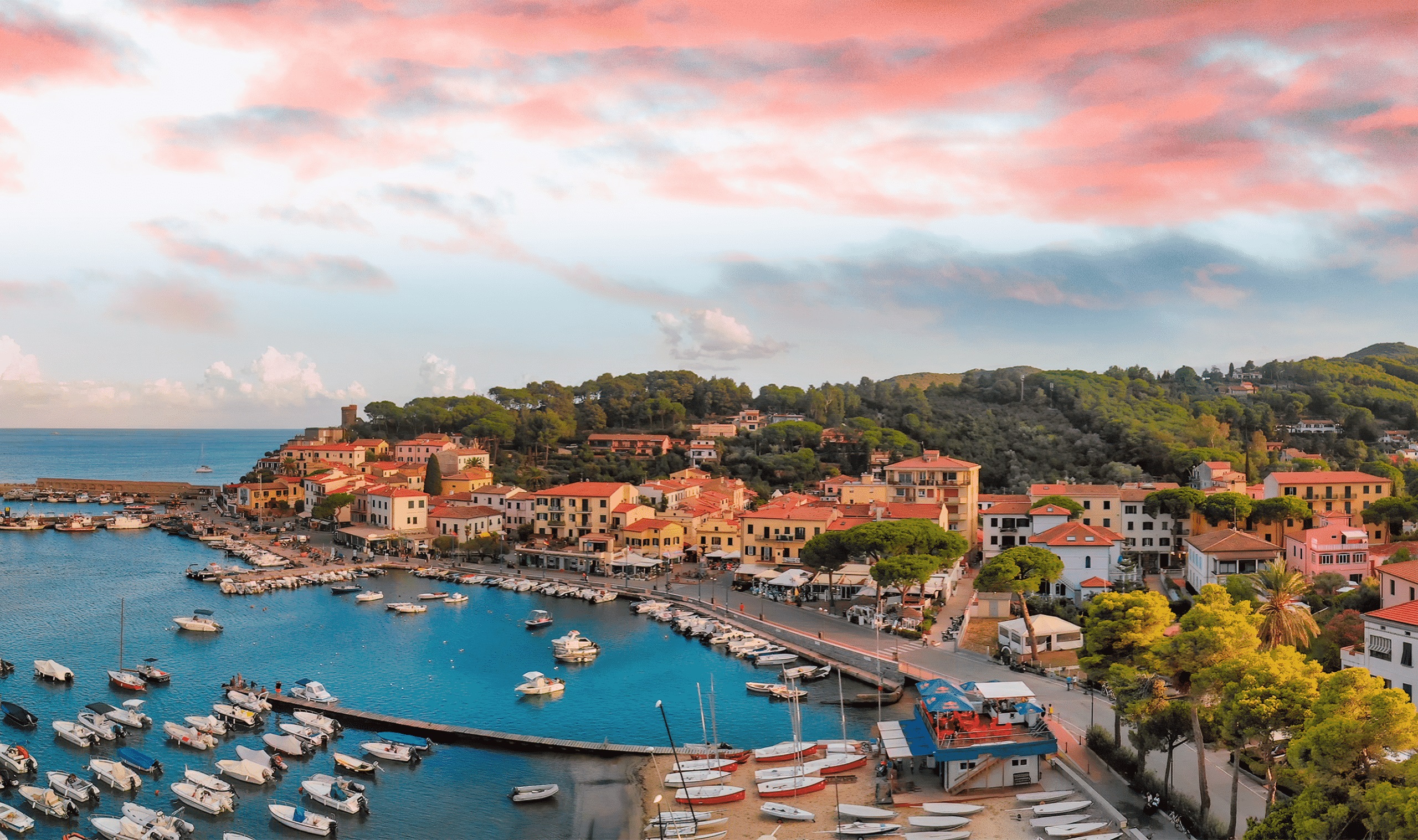
Day 4, Capo Corso – Marina di Campo, 35 nautical miles
We leave Corsica to return to the Tuscan Archipelago. Our destination is the island of Elba, more precisely Marina di Campo, one of the most popular spots among sailors. The picturesque historic center of Marina di Campo, with its Pisa-Medicean watchtower and its small harbor—once used to export granite quarried from Monte Capanne—and the surrounding pine forest frame the stunning bay. A magical place that has attracted an international audience since the 1950s. Its very name indicates a significant flat area that stretches to the Gulf of Campo, ending in a beautiful beach.
Once ashore, you can visit the Church of San Nicolò in San Piero, believed to have been built on the remains of a temple dedicated to the god Glaucus during Roman times. Other points of interest include the Torre di San Giovanni, the Church of San Francesco on the road to Monte Perone, and the Roman Columns in Seccheto. Marina di Campo is also home to the Elba Aquarium, one of the largest in Italy, known for its wide variety of Mediterranean species.
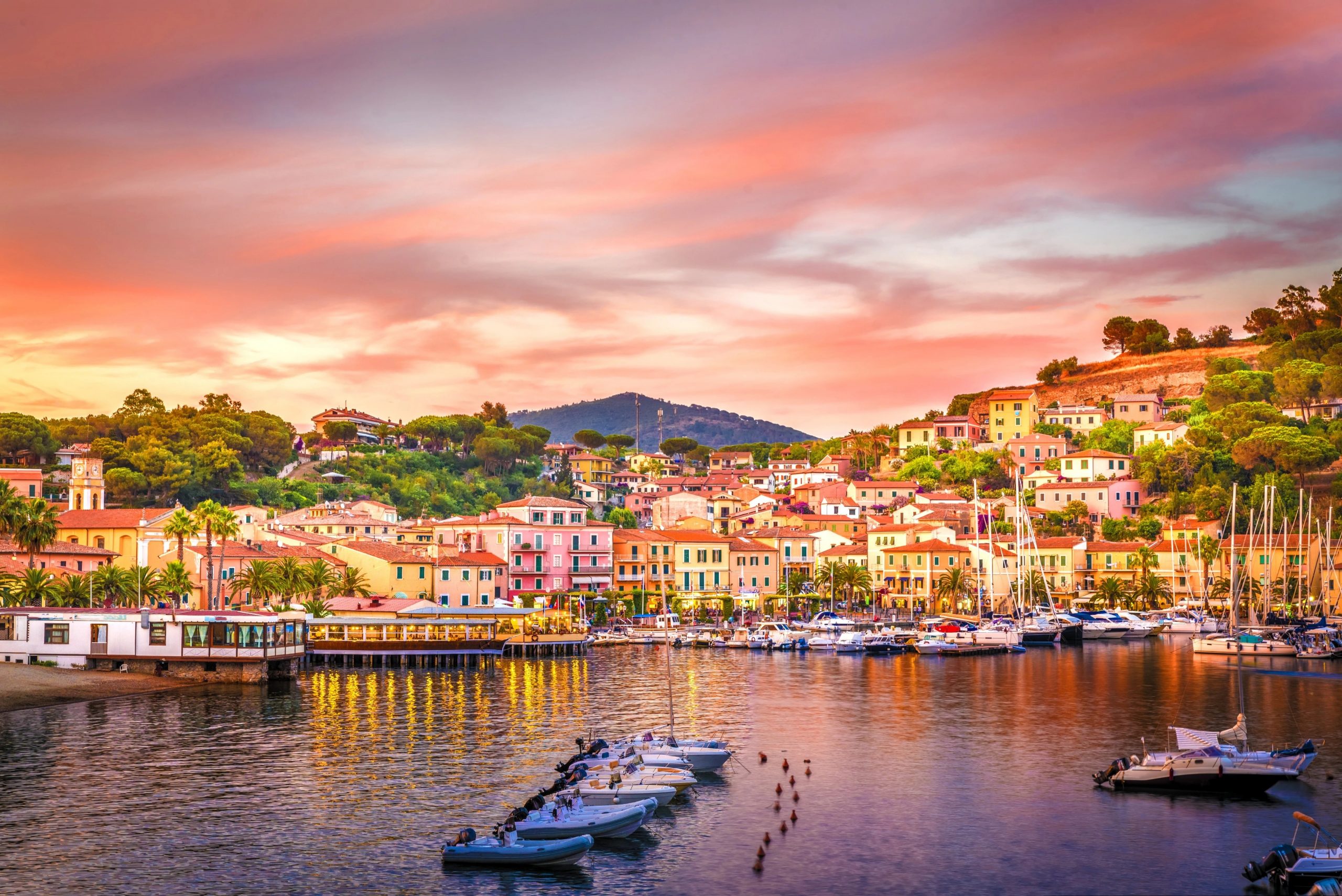
Day 5, Marina di Campo – Porto Azzurro, 15 nautical miles
Capraia, Corsica, and Elba. We continue our cruise, sailing to Porto Azzurro, an ancient fishing village. It was originally called Portolongone, a name given in 1603 by Philip III of Spain, who intended to turn it into a fortified settlement to defend the territory. The town’s harbor offers 120 berths and consists of a quay and two piers, in front of which are floating docks over sandy seabeds ranging from 1.2 to 9 meters. Other nearby sheltered bays include Cala di Mola and the Portoferraio anchorage.
The heart and social hub of Porto Azzurro is Piazza Matteotti, one of the largest and most beautiful squares on the island. Between its narrow alleys and winding streets rise majestic buildings, bearing witness to the village’s ancient past. Among the most remarkable is Forte San Giacomo, an imposing fortress commissioned by Philip III in 1602 to defend against frequent Saracen pirate attacks. Equally interesting sites include the Church of Madonna del Carmine and the Church of San Giacomo Maggiore. Not far from Porto Azzurro, atop a rocky spur accessible on foot, lies the Sanctuary of Madonna di Monserrato, built in 1606 to replicate the famous sanctuary in Barcelona.
The most convenient beach near Porto Azzurro’s center is La Pianotta, featuring crystal-clear waters, fine pebbles, and large rocks. Nearby are also the beaches of Barbarossa, Reale, and the unique Terranera.
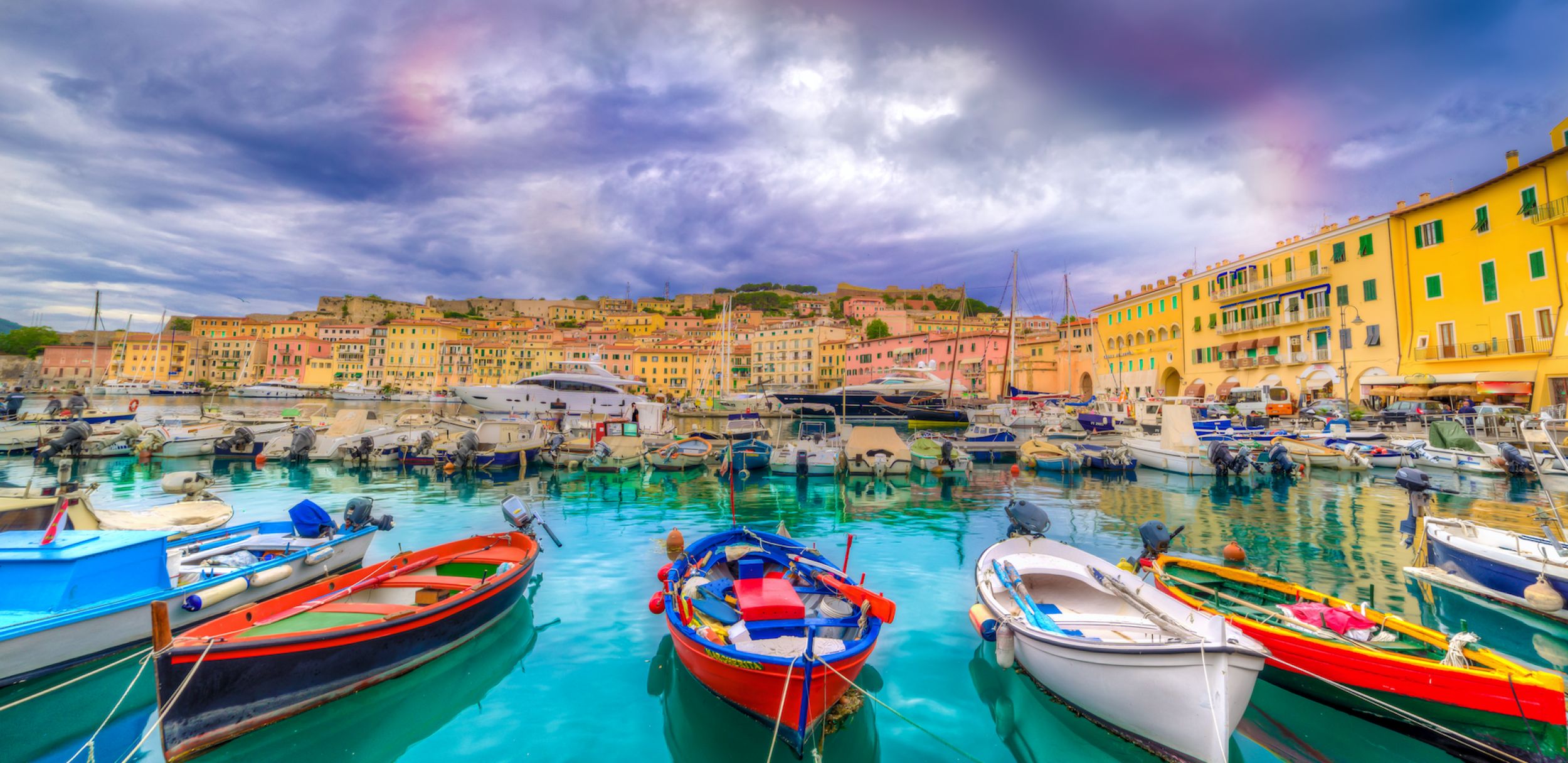
Day 6, Porto Azzurro – Portoferraio, 17 nautical miles
We head toward Portoferraio, a splendid seaside town on the northern coast of Elba, serving both as the island’s capital and its main port. The historic center of Portoferraio is a typical fishing village with medieval touches. To the west stands Forte Falcone, dating back to the mid-16th century, which can be visited today to admire the soldiers’ quarters, the powder magazine, and the armory. To the east is Forte Stella, also built for defensive purposes, which houses the Portoferraio lighthouse from the 18th century. In addition to the famous Portoferraio Cathedral in Piazza della Repubblica, another notable site is Villa Mulini, the historic residence of Napoleon, who lived on Elba during his exile between 1814 and 1815. Today, Villa Mulini hosts a beautiful Napoleonic museum.
Capraia, Corsica, and Elba. Among the most beautiful beaches in Portoferraio are Spiaggia delle Viste, located just behind the historic center, with pebbles and crystal-clear waters; the renowned Spiaggia delle Ghiaie, also just a short walk from the center; Cala dei Frati, accessible only by sea; Spiaggia della Padulella, small and stunning; Spiaggia di Capo Bianco; and finally Spiaggia della Biodola, one of the most beautiful beaches on Elba.
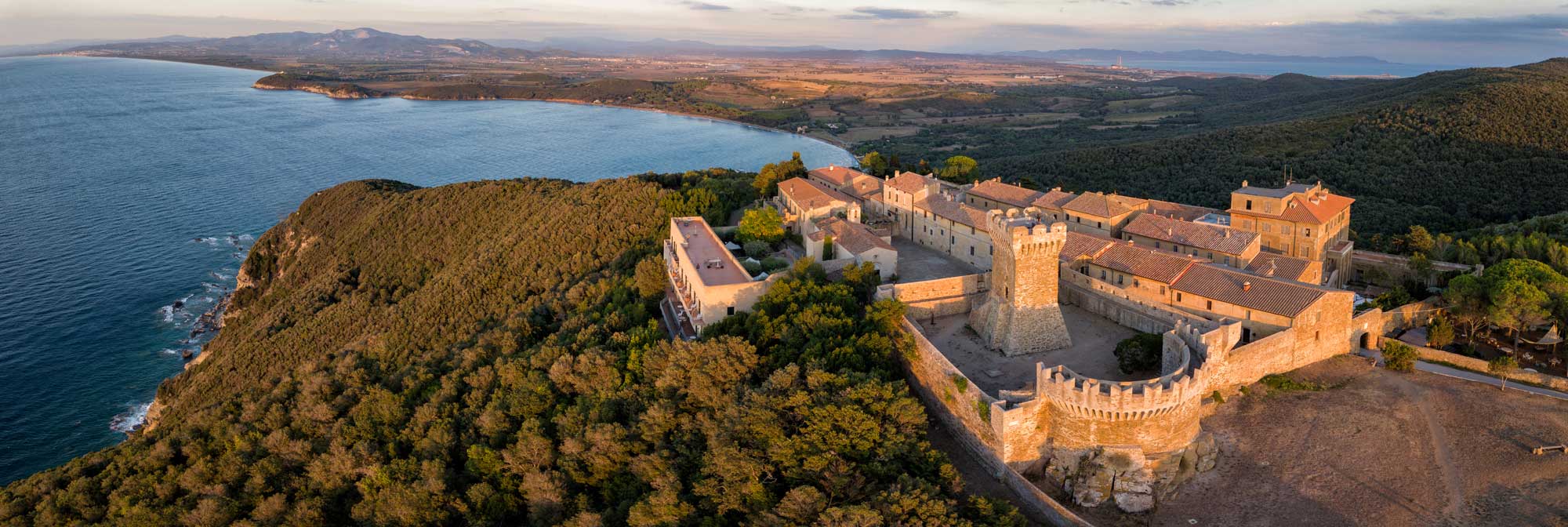
Day 7, Portoferraio – Baratti – Marina di San Vincenzo, 20 nautical miles
It’s time to return to Marina di San Vincenzo, but first we explore the delightful Gulf of Baratti, located north of the Piombino promontory. Here, the boat can be moored using one of the many permanent berths installed on the right side of the bay. Just behind Baratti’s small harbor, you can visit the Fortified Village, where Etruscan archaeological excavations can be explored.
You May Also Like
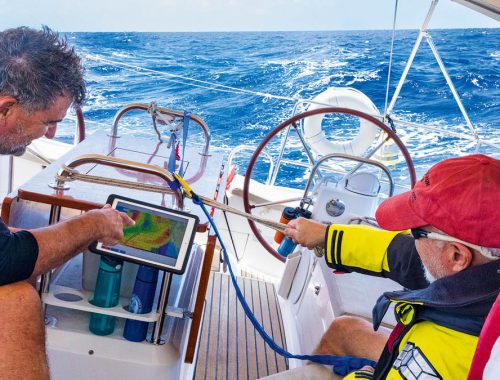
The right approach to sailing even without electronics
04/11/2025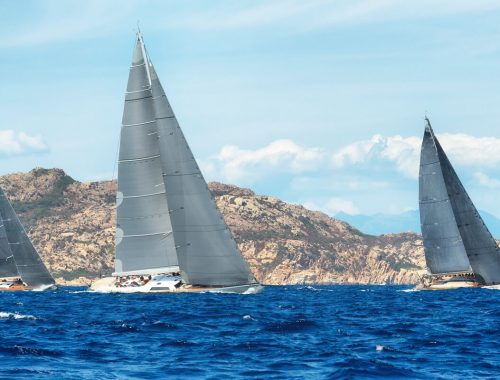
How to Minimize Engine Use While Cruising on a Sailboat
14/05/2025